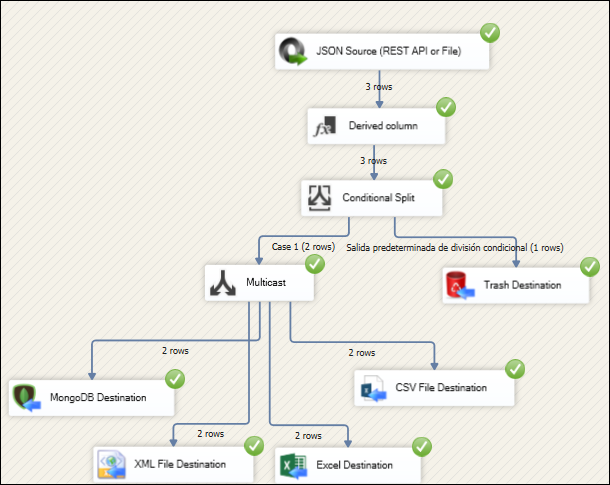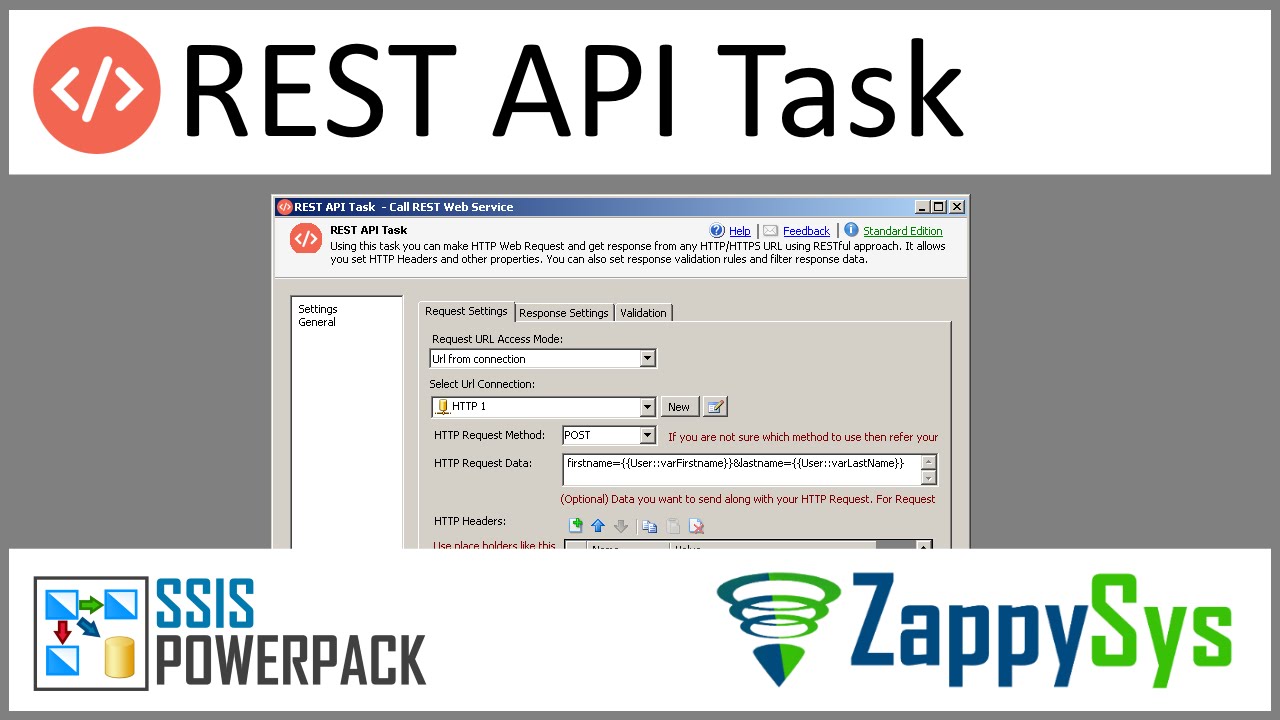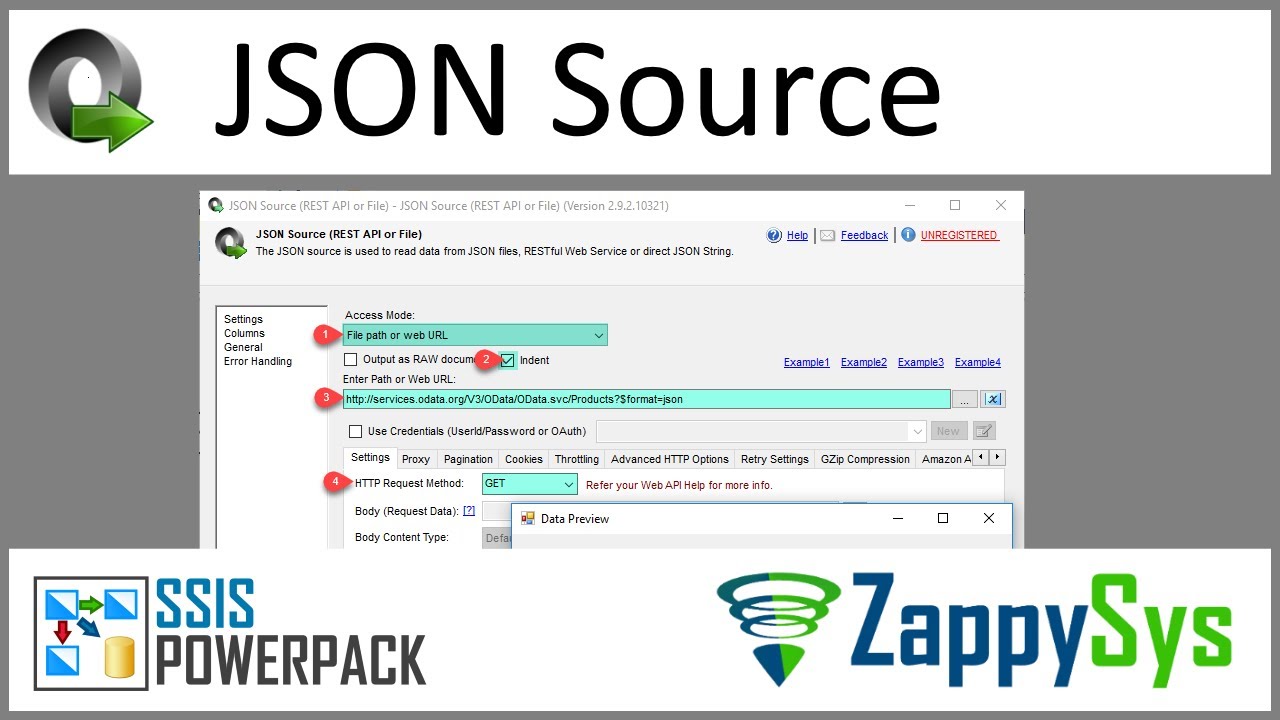Introduction
This article will show the differences and similarities between REST API Tasks and JSON Sources. We will provide examples and situations for both components.
Similarities
Both components have many similar functions. Here is a list of similarities:
-
API call: Both tools are designed to facilitate interaction with APIs, enabling SSIS packages to fetch or send data over the web.
-
Support for JSON: Both tools can handle JSON data as part of the API response (REST API Task) or as the primary data source (JSON Source).
-
Error Handling: Both provide mechanisms for handling errors, ensuring robust and reliable data integration processes.
-
Security: Both tools support secure connections to APIs.
-
Authentication methods: Both support OAuth (1.0 and 2.0), basic authentication, dynamic tokens, and more.
-
Data Transformation and Filtering: Both tools allow for data transformation and filtering—more information here.
-
Connection Management: Both tools have robust options for managing connections, including specifying HTTP headers, URL parameters, and request bodies.
Differences
Now, we will see the key differences between both components:
-
Purpose: REST API Task is a general-purpose tool for making API calls and handling responses, whereas JSON Source specializes in reading and processing JSON data.
-
Flexibility: REST API Task offers more flexibility regarding HTTP methods and request customization, making it suitable for a broader range of API interactions.
-
Data Handling: JSON Source exports the data to other formats like Excel, CSV, XML, MongoDB, SQL server, etc. Before exporting, you can transform the data or use conditional splits.

Video Tutorial
Watch a detailed video tutorial on this process:
Conclusion
Depending on your situation, this article helps you decide which component to use. If any issues arise, please contact our support via chat on our website.

